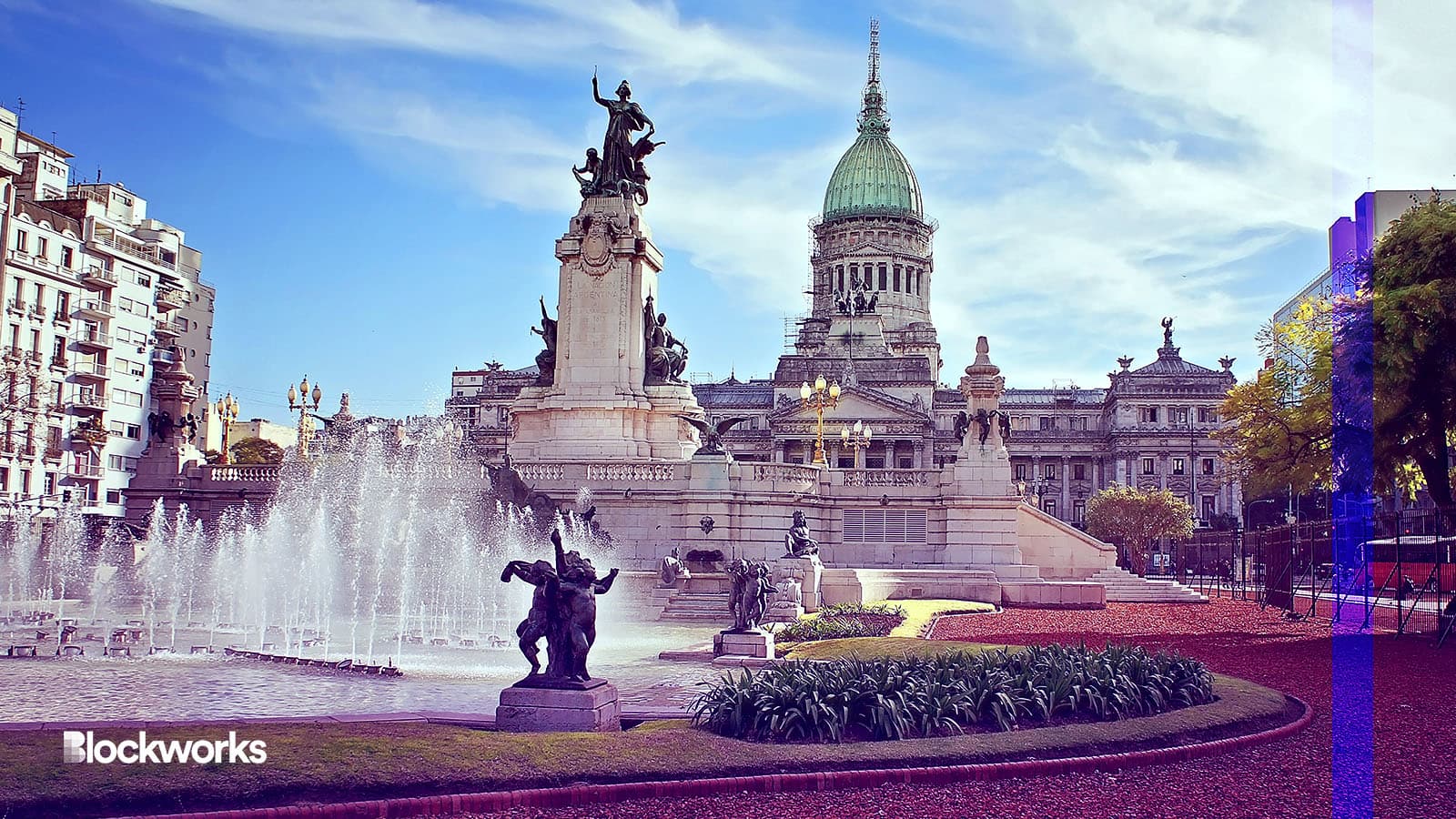Buenos Aires government ID, coming to Ethereum via zkSync
By year-end, the complete QuarkID roadmap aims to reach over 2.5 million users by broadening the range of available credentials

eskystudio/Shutterstock, modified by Blockworks
Next month, Buenos Aires will begin rolling out a blockchain-based and open-source digital identity protocol, QuarkID, in an effort to streamline citizen access to public services.
Buenos Aires citizens will be able to download the protocol’s native wallet to claim essential personal documents such as birth and marriage certificates, according to a statement on Wednesday.
The move is being touted as a “first” in Latin America, in collaboration with on-chain digital identity solutions firm Extrimian and Matter Labs, the company behind Ethereum layer-2 blockchain zkSync Era.
QuarkID’s service intends to operate on the principle of self-sovereignty, allowing individuals complete control over their personal data. While documentation will initially be limited, the Buenos Aires government is planning a phased introduction of various official credentials.
Starting in November, citizens will be able to access proof of income and academic attendance certificates — key documents for benefits claims — within their digital wallets.
For the initial rollout, Buenos Aires citizens will need to complete the existing biometric know-your-customer procedures for identity verification to create a QuarkID wallet.
The full roadmap for QuarkID, set to be released by year-end, aims to extend the service to over 2.5 million users by expanding the list of available credentials, per the statement.
Diego Fernandez, Secretary of Innovation of the Buenos Aires City Government, described the initiative as a digital trust framework serving as a “public good.”
“With this development, Buenos Aires becomes the first city in Latin America and one of the first in the world to integrate and promote this new technology,” he said.
Built atop Matter Labs’ tech stack, the QuarkID wallet takes advantage of zkSync Era’s blockchain framework for consolidated document storage. ZkSync Era serves as the settlement layer for the QuarkID platform, ensuring the proper ownership of each stored document.
Adoption incoming?
Building on prior efforts since 2022, the Secretariat of Innovation and Digital Transformation in Buenos Aires has been working with Extrimian and other tech companies, including IOV Labs, OScity and Xcapit, as well as the local community.
Together, they are aiming to advance the development decentralized digital identity, seeking to evolve the current paradigm of e-government services across Latin America.
The region itself is fast becoming a hotbed for blockchain use case adoption, demonstrating a willingness to employ censorship-resistant technologies for official government business and record keeping.
Citizens across the region are also increasingly warming to the idea of transacting using crypto, ever since El Salvador became the first nation in the world to adopt bitcoin (BTC) as an official form of currency, alongside the US dollar, in 2021.
A Ripple survey last year found that 74% of Latin Americans are more likely to transact with businesses that accept crypto, compared with just 41% of Europeans. A separate survey by Mastercard in June of that year found more than half of Latin Americans reported having already paid for goods and services using digital assets.
Chainalysis’ latest figures from its Global Crypto Adoption Index show Brazil, Mexico and Argentina rank within the top 20 countries globally, besting the likes of Japan and Bangladesh.
Get the news in your inbox. Explore Blockworks newsletters:
- The Breakdown: Decoding crypto and the markets. Daily.
- 0xResearch: Alpha in your inbox. Think like an analyst.






